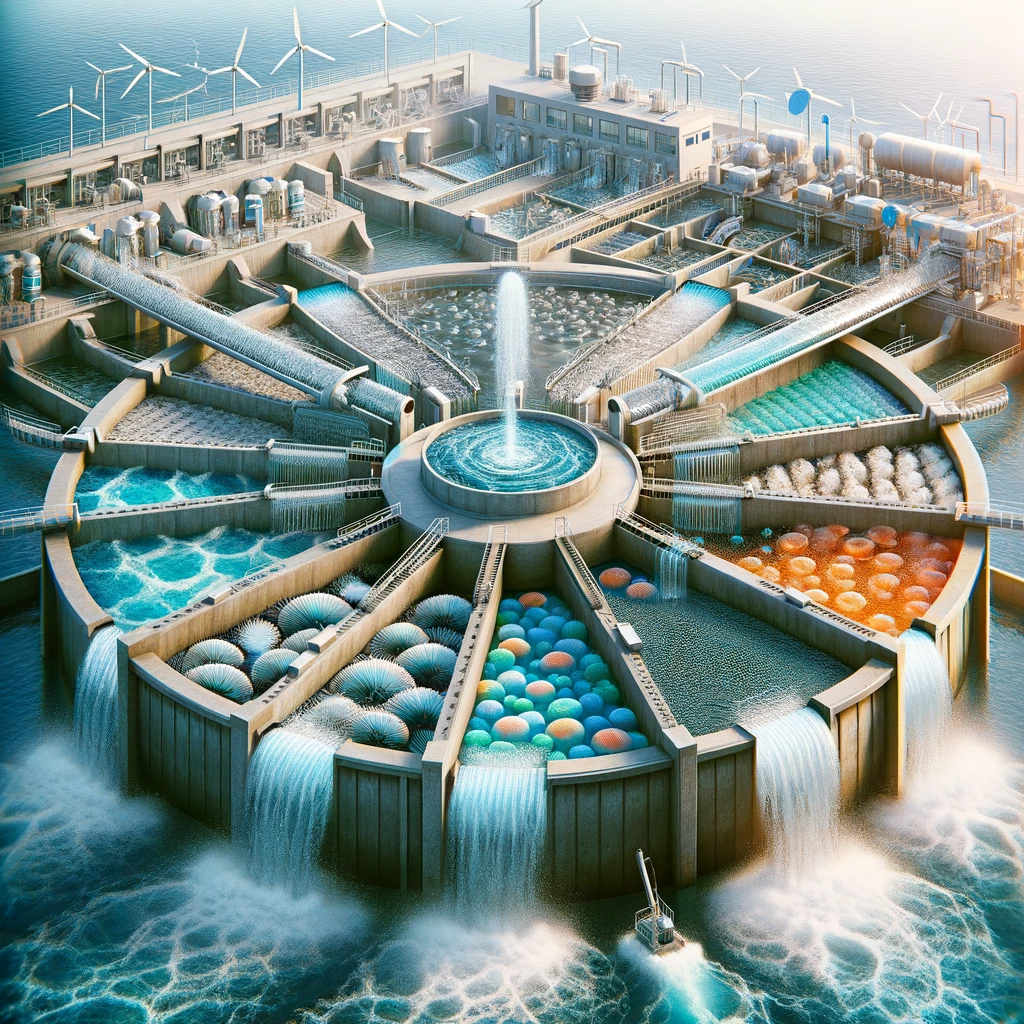Water is the essence of life, and ensuring its cleanliness is paramount for our health, the environment, and future generations. Wastewater, generated from various sources, often contains contaminants that must be removed before the water can be safely released into the environment or reused. In this comprehensive guide, we will explore the diverse methods and technologies used in wastewater treatment to achieve cleaner, safer water for all.

Understanding the Need for Wastewater Treatment:
Wastewater is generated from numerous activities such as domestic use, industrial processes, and agricultural practices. This water contains pollutants, including organic matter, chemicals, pathogens, and suspended solids. If left untreated, these contaminants can pose serious health risks and harm ecosystems.
Primary Wastewater Treatment:
Primary treatment is the initial step in wastewater treatment and involves the physical separation of solids and liquids. In this process, wastewater is passed through screens and sedimentation tanks to remove larger solids and floating debris.
Benefits:
- Removes large particles and reduces odor.
- Prepares wastewater for secondary treatment.
Limitations:
- Does not remove dissolved pollutants.
- Requires further treatment for comprehensive purification.
Secondary Wastewater Treatment:
Secondary treatment is a biological process that targets dissolved and suspended organic matter remaining in the water after primary treatment. Microorganisms are used to break down pollutants in aeration tanks.
Benefits:
- Effective removal of organic matter.
- Reduction in the concentration of pollutants.
Limitations:
- May not eliminate all contaminants.
- Requires energy for aeration.
Tertiary Wastewater Treatment:
Tertiary treatment is the advanced stage of wastewater treatment, aiming to remove remaining pollutants and achieve a high level of water quality. Various methods are employed in tertiary treatment, including:
1. Filtration:
Filtration involves the passage of water through granular media like sand or activated carbon, which traps remaining suspended particles and microorganisms.
Benefits:
- Exceptional removal of fine particles.
- Enhances water clarity and quality.
Limitations:
- Requires regular maintenance and replacement of filter media.
2. Chemical Treatment:
Chemical treatment includes the addition of chemicals like chlorine or ozone to disinfect water and remove trace contaminants.
Benefits:
- Effective disinfection and removal of pathogens.
- Breakdown of chemical pollutants.
Limitations:
- Careful handling of chemicals is required to avoid environmental harm.
3. UV Disinfection:
Ultraviolet (UV) disinfection uses UV light to inactivate microorganisms in the water, rendering them harmless.
Benefits:
- Environmentally friendly disinfection method.
- Does not leave residual chemicals in the water.
Limitations:
- Initial setup costs can be high.
Advanced Wastewater Treatment:
In addition to the above methods, advanced wastewater treatment technologies continue to evolve to address emerging contaminants and enhance water quality. Some cutting-edge techniques include:
1. Membrane Bioreactors (MBRs):
MBRs combine biological treatment with membrane filtration, resulting in superior water purification and reduced footprint.
Benefits:
- High-quality effluent.
- Compact design for space-efficient installations.
Limitations:
- Requires regular membrane maintenance.
2. Reverse Osmosis (RO):
RO utilizes semi-permeable membranes to remove dissolved salts, minerals, and contaminants from water.
Benefits:
- Excellent removal of dissolved pollutants.
- Suitable for desalination.
Limitations:
- High energy consumption.
Sustainable Practices in Wastewater Treatment:
As environmental awareness grows, sustainable practices in wastewater treatment are becoming increasingly important. These practices include:
- Water reuse for non-potable purposes.
- Energy recovery from treatment processes.
- Minimization of chemical use.
- Green infrastructure for natural treatment.
Conclusion:
Wastewater treatment is a vital process that ensures clean water for our communities and ecosystems. By understanding the various methods and technologies available, we can make informed choices to protect our environment and secure a healthier future. As advancements in wastewater treatment continue, our ability to purify water and protect the world’s most precious resource will only improve. So, let’s work together to prioritize wastewater treatment and ensure clean water for all.
